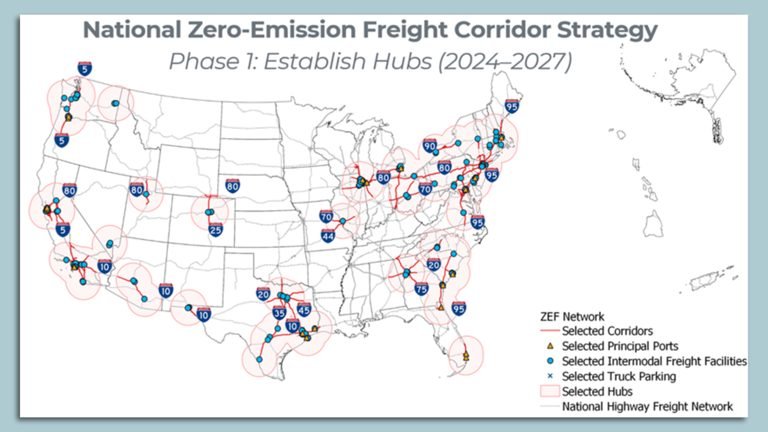The Biden administration has unveiled a detailed road map to help spur build-out of charging and hydrogen refueling infrastructure for big trucks.
Why it matters: Diesel-powered freight movement is a big source of carbon dioxide, and dangerous air pollutants like fine particulate matter.
- Yet lack of infrastructure to support electric and hydrogen models is a barrier to deployment.
The big picture: Enter the new “National Zero-Emission Freight Corridor Strategy.”
- It’s designed to help guide public dollars and catalyze private investment, but it also aims to “focus utility and regulatory energy planning” at local and regional levels and “align” industry activity.
- Officials see a tool for breathing life into the administration’s goal of zero-emissions models reaching 30% of medium- and heavy-duty truck sales in 2030, and 100% by 2040.
Threat level: These trucks spew roughly a fourth of all greenhouse gases from U.S. transportation, the announcement states. And transportation is the largest overall emissions source.
Catch up fast: Recent years have given officials new money and policy tools, such as billions in the bipartisan infrastructure law for refueling infrastructure.
The bottom line: The strategy is an attempt to get lots of voices singing in harmony.

